How to Prepare for a Dwarf Hotot's Unique Care Needs
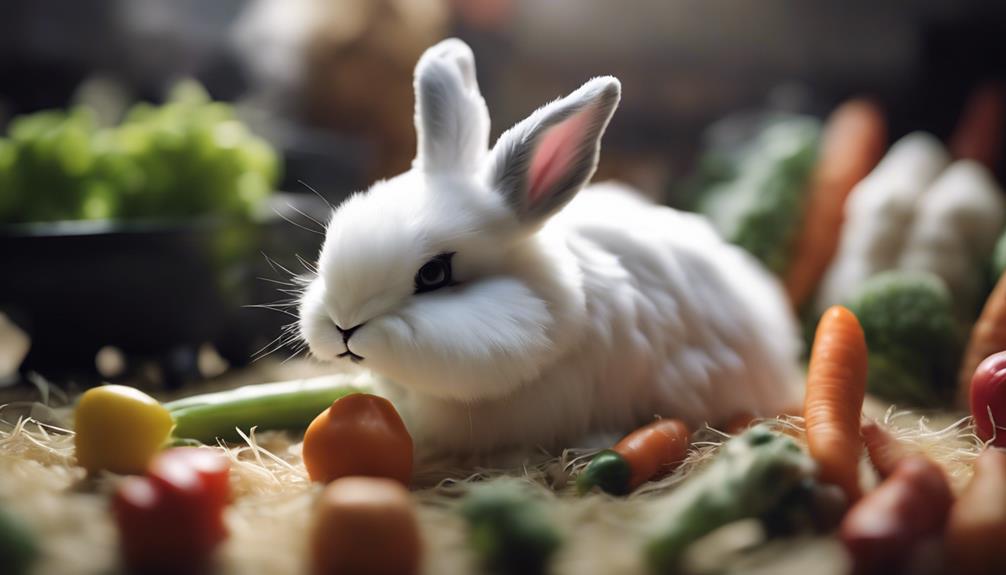
Dwarf Hotots are a small breed of rabbit known for their distinctive markings and friendly personalities. To ensure their well-being and companionship, it is important to provide them with a proper diet, regular exercise, and a safe living environment.
Proper nutrition is essential for Dwarf Hotots, as they are prone to obesity and dental problems. A diet rich in hay, fresh vegetables, and a small amount of pellets will help keep them healthy and happy. It is also important to provide them with plenty of opportunities for exercise, such as a large, secure enclosure or supervised playtime outside of their cage.
In addition to their physical needs, Dwarf Hotots also require mental stimulation and social interaction to thrive. Providing them with toys, tunnels, and other enrichment activities will help keep them mentally sharp and engaged. Regular handling and interaction with their human companions is also important, as Dwarf Hotots are social animals that enjoy companionship.
By meeting their unique needs for nutrition, exercise, mental stimulation, and social interaction, you can ensure that your Dwarf Hotot lives a happy and healthy life. With proper care and attention, these adorable rabbits can make wonderful companions for years to come.
Dwarf Hotot Rabbit Characteristics
Dwarf Hotot rabbits, known for their striking white fur and distinctive black eye bands, are a small-sized breed cherished for their friendly demeanor and unique physical features. Weighing between 2.5 to 3.5 lbs, these rabbits boast a compact body with a round head, short erect ears, and wide shoulders.
The breed's origins trace back to a cross between Blanc de Hotots and Netherland dwarfs, resulting in their standout appearance. Recognized by the American Rabbit Breeders Association in 1983, Dwarf Hotots have gained popularity not only for their physical attributes but also for their affectionate nature and playful personality, making them ideal pets for families and individuals seeking companionship.
The contrast between their white fur and the bold black band encircling their eyes gives Dwarf Hotots a distinctive look that appeals to many rabbit enthusiasts. This unique combination of traits sets Dwarf Hotots apart within the rabbit world, making them a beloved choice for those looking for a charming and engaging pet.
Housing Requirements for Dwarf Hotots
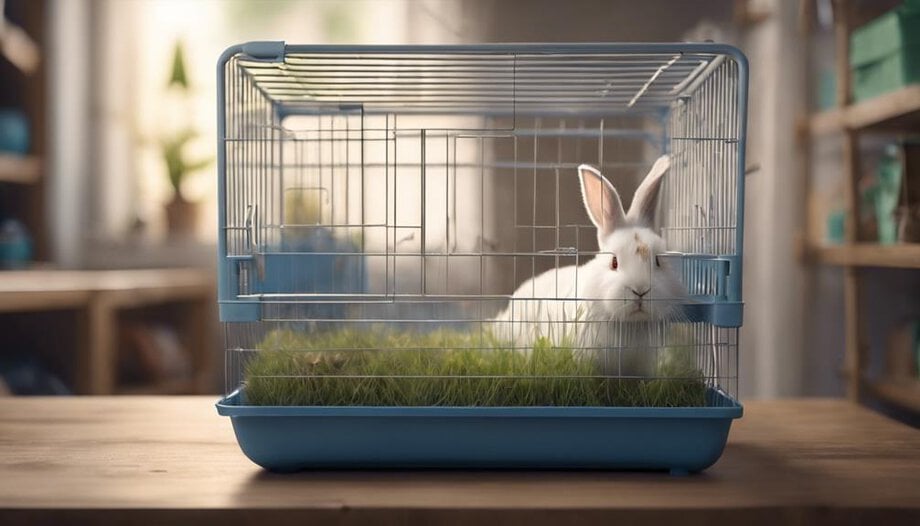
Dwarf Hotots need a spacious enclosure to thrive, ensuring they've enough room to move freely.
The bedding used should be safe and comfortable, considering their sensitive feet.
Providing enrichment items like toys and chewables is crucial to stimulate their minds and prevent boredom.
Cage Size Importance
Adequate space within the cage is crucial for the comfort and well-being of a Dwarf Hotot rabbit. To ensure your furry friend thrives, consider the following:
- Spacious Cage: Dwarf Hotots need a cage with minimum dimensions of 24'x24'x18' to move around freely and get enough exercise.
- Solid Flooring: Opt for solid flooring to prevent foot injuries and ensure your rabbit's comfort.
- Wire Mesh: Use wire mesh carefully to prevent your Dwarf Hotot from getting their feet stuck.
- Hideout Area: Provide a cozy hideout area within the cage for your rabbit to relax and destress.
- Ventilation: Ample ventilation is crucial to maintain good air quality and prevent respiratory issues.
Bedding Considerations
Proper selection of non-toxic and absorbent bedding is essential to ensure the comfort and hygiene of a Dwarf Hotot rabbit's enclosure. For the sensitive feet of Dwarf Hotots, opt for soft bedding like paper-based options or hay. Avoid cedar or pine shavings as these can harm their respiratory system.
Regularly clean and replace the bedding to prevent odor buildup and maintain a healthy living environment. Consider using fleece liners or specialized rabbit bedding to create a cozy and safe space for your Dwarf Hotot.
Prioritizing the Dwarf Hotot's bedding needs not only promotes their well-being but also fosters a comfortable and clean habitat for your beloved pet rabbit.
Enrichment Opportunities
To ensure the optimal well-being and mental stimulation of Dwarf Hotot rabbits, it's crucial to provide a habitat that offers ample space for exploration and various enrichment opportunities.
- Hiding Spots: Creating secluded areas for your Dwarf Hotot to retreat to can offer them a sense of security and privacy.
- Tunnels: Introducing tunnels to their environment can encourage natural behaviors like burrowing and provide them with a fun way to navigate their space.
- Platforms: Adding platforms at different heights can give your rabbit a chance to climb and observe their surroundings from various perspectives.
- Chew Toys: Offering a variety of safe chew toys can help satisfy their natural urge to chew and keep their teeth healthy.
- Puzzles: Providing puzzles and interactive toys can stimulate their mental faculties and prevent boredom.
Dietary Needs of Dwarf Hotot Rabbits

Dwarf Hotot rabbits need a diet primarily consisting of high-quality commercial pellets to fulfill their nutritional requirements adequately. Ensuring a nutrient-balanced intake is crucial, with specific percentages of protein, fiber, fat, and calcium necessary for their well-being.
Incorporating grass hay into their diet is essential for digestive health and dental maintenance, while occasional treats like apples and carrots can be given in moderation.
Proper Nutrition Essentials
Ensuring a balanced nutrient intake is crucial for the optimal health and well-being of Dwarf Hotot rabbits. These small creatures have specific dietary needs that must be met to keep them healthy and happy:
- High-Quality Pellets: Provide main diet for essential nutrients.
- Grass Hay: Crucial for digestive health and overall well-being.
- Occasional Treats: Offer treats like apples and carrots in moderation.
- Clean Water: Access to water at all times for hydration.
- Nutritional Requirements: Aim for 12-18% protein, 18% fiber, 3% fat, and 1% calcium in their diet.
Meeting these dietary needs will help your Dwarf Hotot rabbit thrive and lead a fulfilling life.
Balanced Diet Importance
Balanced nutrition plays a vital role in meeting the dietary needs of Dwarf Hotot rabbits, ensuring their overall health and well-being. These rabbits require a diet high in fiber, making hay a crucial component for digestive health.
Their daily intake should consist of high-quality commercial food pellets with specific nutrient percentages to maintain optimal health. Including fresh vegetables and occasional treats like apples and carrots in their diet provides essential vitamins and minerals.
Access to clean water at all times is crucial for their hydration. Proper nutrition is key to preventing common health issues and ensuring a happy, thriving pet.
Grooming Tips for Dwarf Hotots
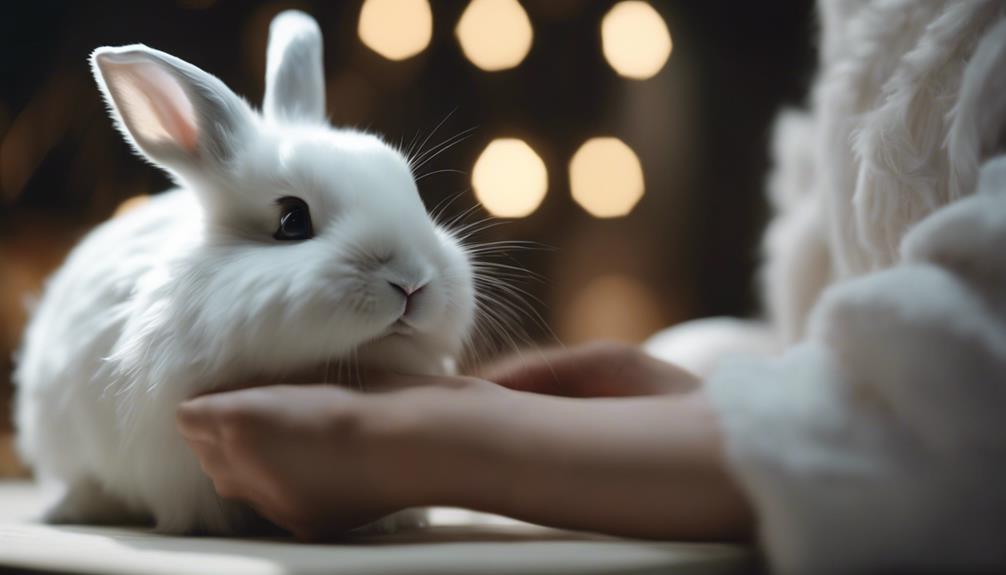
Regular grooming is essential to maintaining the coat health and appearance of a Dwarf Hotot rabbit. Here are some grooming tips to keep your pet looking and feeling its best:
- Brush your Dwarf Hotot's coat once a week to keep it shiny and free of loose fur and dirt.
- Increase grooming frequency during shedding season to prevent matting and hairballs.
- Use a soft-bristled brush or grooming glove for gentle removal of loose fur and dirt.
- Avoid bathing your Dwarf Hotot unless absolutely necessary, as rabbits can get stressed and develop respiratory issues from water exposure.
- Trim your rabbit's nails as needed to prevent overgrowth, which can cause discomfort and difficulty in handling.
Socialization and Exercise for Dwarf Hotots
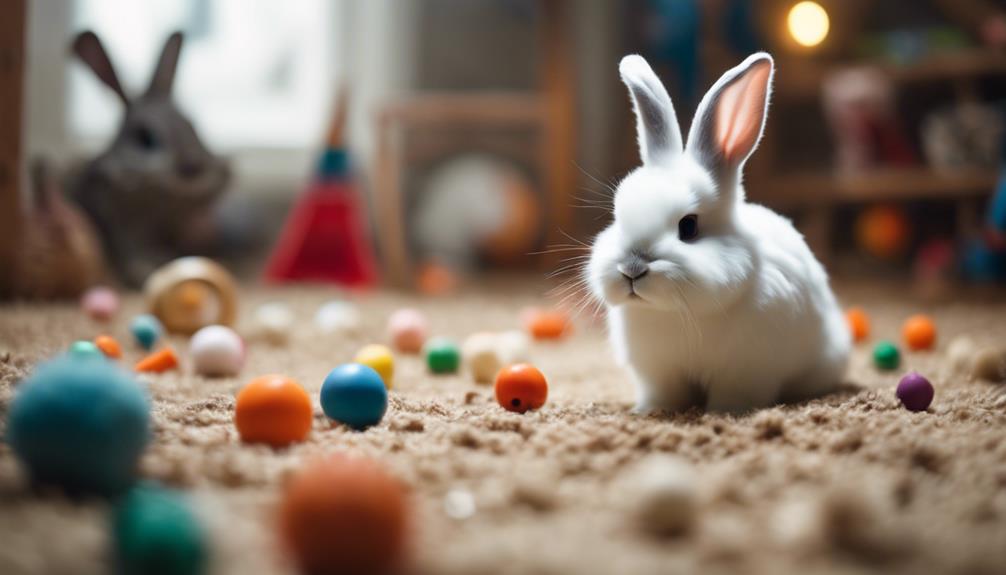
For a Dwarf Hotot rabbit's well-being and happiness, providing opportunities for socialization and exercise is crucial in maintaining their overall health and vitality. Dwarf Hotots are social creatures that thrive on companionship, preferring to live in pairs or small groups for mental stimulation and emotional well-being. Regular socialization with humans is essential to prevent loneliness and ensure a well-adjusted, friendly demeanor in these rabbits.
In addition to socialization, providing ample space for exercise is vital for Dwarf Hotots. This can include a large enclosure or supervised playtime outside of the cage. Engaging in interactive play sessions, offering toys for mental stimulation, and creating obstacle courses can keep Dwarf Hotots mentally sharp and physically active. Incorporating tunnels, ramps, and platforms in their living environment encourages natural behaviors like hopping, running, and exploring, promoting overall health and happiness while also preventing obesity.
Health Considerations for Dwarf Hotot Rabbits
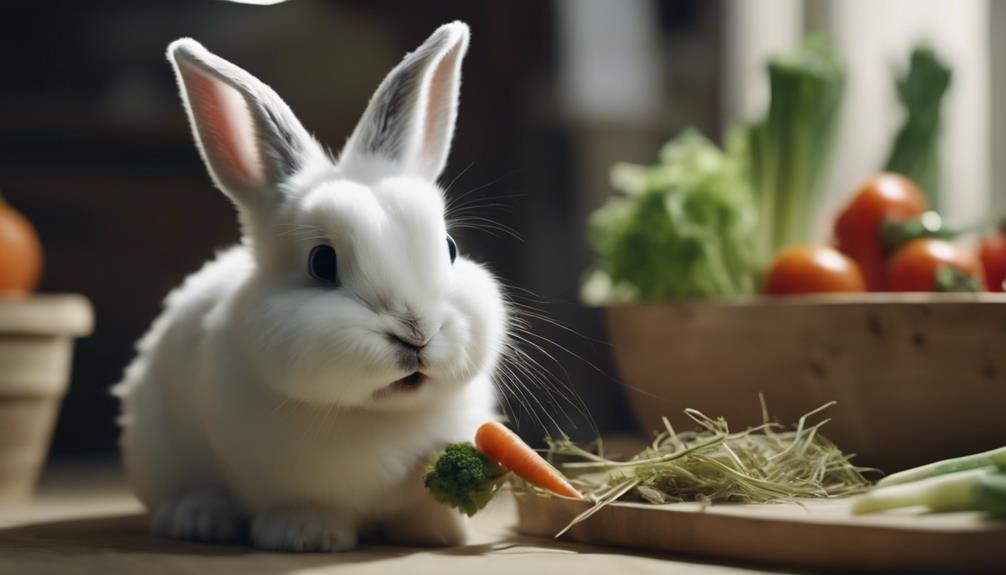
Proper attention to the health needs of Dwarf Hotot rabbits is essential for ensuring their well-being and longevity. When caring for these unique rabbits, there are several health considerations to keep in mind:
- Dental Issues: Dwarf Hotot rabbits are prone to dental problems like malocclusion, which can impact their eating habits and cause discomfort.
- Veterinary Check-ups: Regular visits to the vet are crucial for monitoring the overall health of Dwarf Hotot rabbits and addressing any potential issues promptly.
- GI Stasis: A common health issue in Dwarf Hotot rabbits, GI stasis can arise from factors like an inadequate diet, stress, or lack of exercise, leading to digestive complications.
- Ear Mites: These pesky parasites can affect Dwarf Hotot rabbits, causing discomfort and potential infections if not treated promptly.
- Grooming and Hygiene Practices: Proper grooming and hygiene routines are essential for Dwarf Hotot rabbits to prevent health issues like woolblock and maintain their overall well-being.
Special Care for Dwarf Hotot's Coat
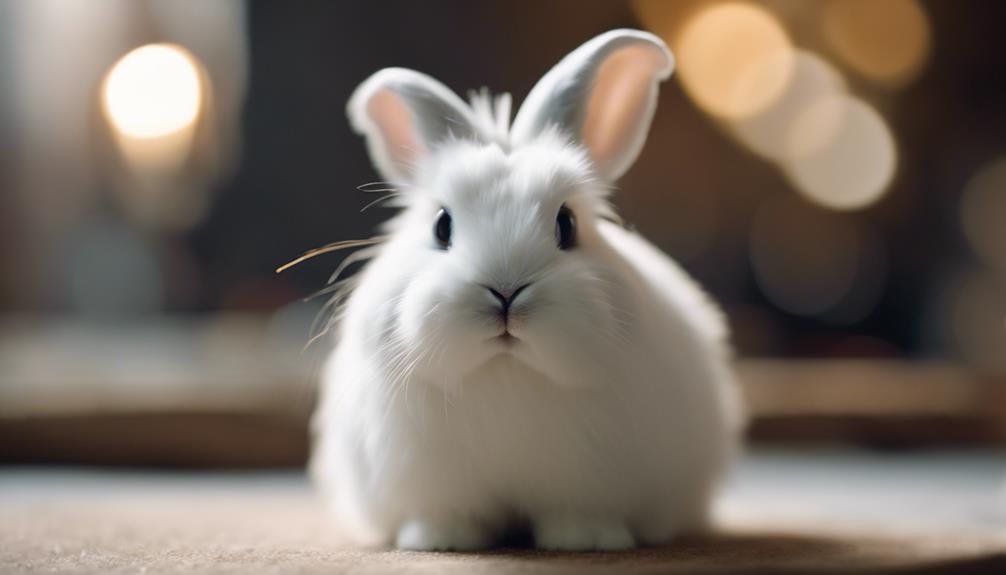
When tending to a Dwarf Hotot rabbit's coat, attention to its unique characteristics is paramount for ensuring their well-being and appearance. The Dwarf Hotot's coat is short, dense, and shiny, requiring minimal grooming. Their distinctive rollback fur naturally sheds seasonally, necessitating regular brushing during shedding season to maintain its condition. Show-worthy Dwarf Hotots boast white coats with striking black eye markings that need to be kept clean and free of mats to promote overall health. Ensuring their coat is free of tangles and debris not only enhances their appearance but also prevents discomfort and skin issues. By dedicating time to grooming and care, owners can help their Dwarf Hotot maintain a shiny, show-worthy coat that reflects the rabbit's health and vitality.
| Care Aspect | Description |
|---|---|
| Coat Characteristics | Short, dense, shiny with rollback fur |
| Grooming Needs | Minimal grooming, regular brushing during shedding |
| Show-Worthy Traits | White coat, distinct black eye markings |
| Maintenance Tips | Keep coat clean, free of mats for overall well-being |
Frequently Asked Questions
How Do You Take Care of a Dwarf Hotot?
To take care of a Dwarf Hotot, groom regularly, provide exercise opportunities, establish a feeding routine, offer suitable housing, watch for health issues, prioritize socialization, use positive training methods, engage in playtime, build a bond, and provide enrichment activities.
What Do You Need to Care for a Dwarf Bunny?
To care for a dwarf bunny, one needs a suitable cage, proper nutrition, regular vet check-ups, enrichment items, and a consistent environment. Grooming tips, exercise needs, and socialization techniques play vital roles in ensuring the bunny's well-being.
What Type of Coat Does a Dwarf Hotot Have?
The Dwarf Hotot boasts a stunning coat with white fur and striking black eye markings. Its fluffy and soft texture requires minimal grooming. With unique coloring and a long lifespan, regular brushing routines keep its coat in top condition.
How to Take Care of a Rabbit?
Rabbits need a balanced diet of pellets, hay, and veggies, exercise in a spacious enclosure, regular grooming, health check-ups, socialization, enrichment activities, gentle handling, bonding time, and behavioral training for a happy, healthy life.









